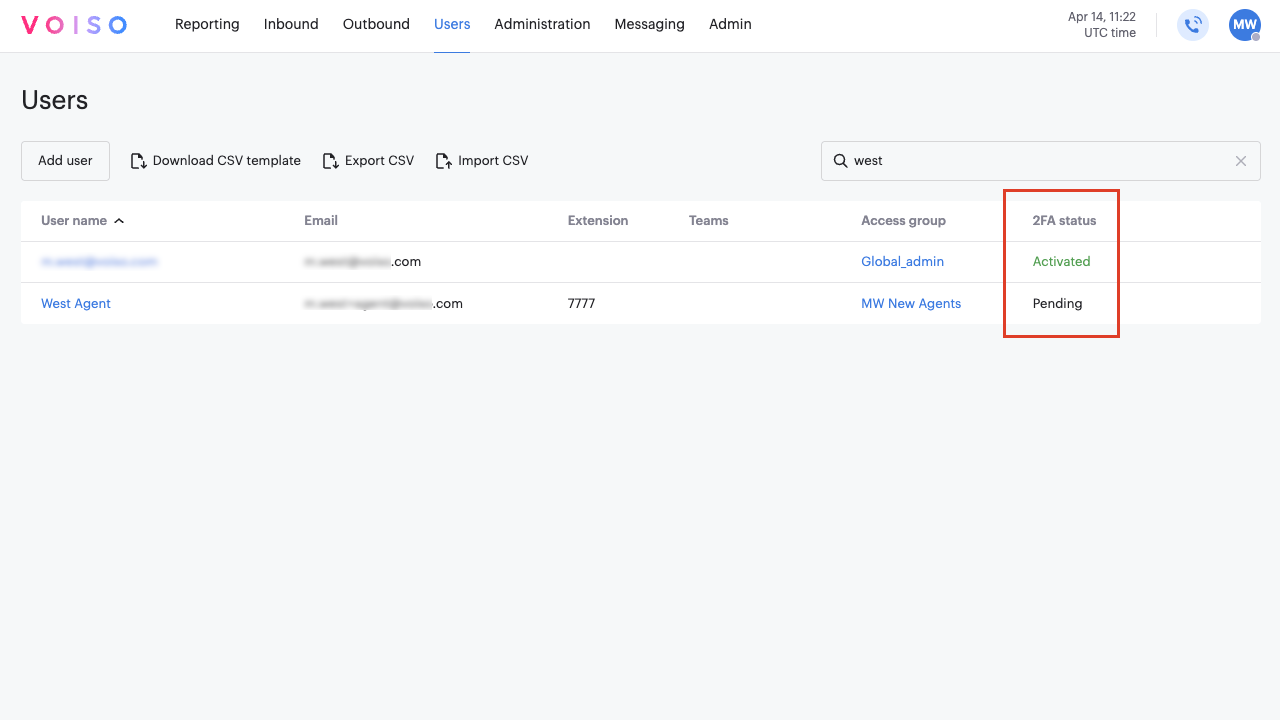Who should read this article: Administrators, Supervisors
Two-factor (2FA) authentication provides a higher level of security and protection for account users and systems than standard username/password login.
Introduction
Two-factor authentication (2FA), also known as multi-factor authentication (MFA), is a security measure that requires users to provide two different forms of identification, or authentication factors, to verify their identity.
Two-factor authentication significantly reduces the risk of unauthorized access, even if the user's password is compromised. It adds an extra layer of security by requiring an additional form of authentication that is typically more difficult for attackers to obtain or replicate.
Voiso implements two-factor authentication by requiring users to provide a username and password along with a token from the Google Authenticator app or browser plug-in.
Before using Voiso for the first time, including on the Voiso Mobile app, the Freshdesk integration, and the Salesforce integration, users must complete the two-factor authentication setup.
Managing 2FA for your contact center
Two-factor authentication (2FA) is enabled by default for all Contact Center plans. If you prefer to make 2FA optional, contact your Voiso representative to request this change.
To view or manage 2FA settings, go to Administration > System settings, then click the Security tab. For more details, refer to Two-factor authentication.
If 2FA is mandatory in your contact center, the Enable 2FA option is selected by default and cannot be changed. If 2FA has been made optional, the option is still selected by default, but you can deselect it to disable 2FA for your contact center.
The Users page
Use the 2FA status column on the Users page to help you track which users have set up 2FA.

The following statuses are possible:
| Status | Description |
|---|---|
| Pending | The user has 2FA enabled but they have not yet set up 2FA. |
| Activated | The user has completed the 2FA setup procedure. |
| Disabled | 2FA is disabled in your contact center. |
User set up procedure
Refer to the Two-factor authentication article in the Agent Guide to learn how to setup two-factor authentication for the first time, or watch this video:
Reset 2FA
After 2FA has been successfully setup, a reset may be required if a user loses access to their 2FA device or encounters errors during initial setup. Once reset, the user will be prompted to complete the 2FA setup again at their next login. This helps ensure continued account security while minimizing support delays.
Refer to the Users article and the 2FA recovery for lost devices articles for information.